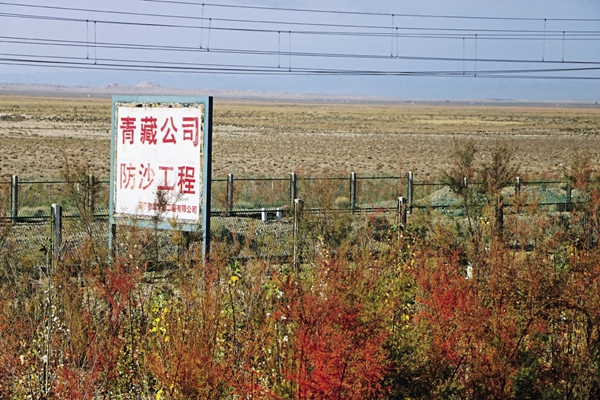Developing Eco-industry to Curb Desertification
China Today by Chen Xin, November 10, 2016 Adjust font size:
Desertification, one of the most serious ecological issues facing the world, is regarded as key in China’s ecological restoration, but is a knotty problem. Desertification has devoured space that could otherwise be used to improve people’s standard of living.
On a national scale, desertification is a barrier in the way of bringing moderate prosperity to the country and damaging the sustainable development of the economy and society. Therefore, controlling desertification and improving the ecological system, especially in the desert area, is now a top priority.
From September 24 to 26, 2016 the China Haixi Desertification Prevention and Control and Green Ecological Industrial Development Seminar was held in Delingha City, Haixi Prefecture of Qinghai Province. After on-site inspections and discussions, the participating experts fully affirmed Haixi’s practices in preventing desertification and developing “sand industry.” They believed the Chinese goji berry industry in Haixi was a great model of China’s desertification management, combining sand control, poverty reduction, and ecological restoration.

The desertification control project along the Qinghai-Tibet Railway.
Haixi Mongolian and Tibetan Autonomous Prefecture is located in the northeastern part of the Qinghai-Tibet Plateau. Its 320,000-square-kilometer area accounts for 44.4 percent of the Qinghai Province. However, this includes 76 percent of the desert land of the province, or 29.6 percent of provincial territory.
In recent years Haixi has upheld the tenet of equal emphasis on environmental and economic progresses. The government engages in building a comprehensive ecological rehabilitation system that deals with environmental protection and economic development in a balanced way. It has closed hillsides for forest conservation and reforestation, carried out projects to fix sand dunes, and the goji berry planting and related industries in Qaidam Basin are an important part of its efforts.